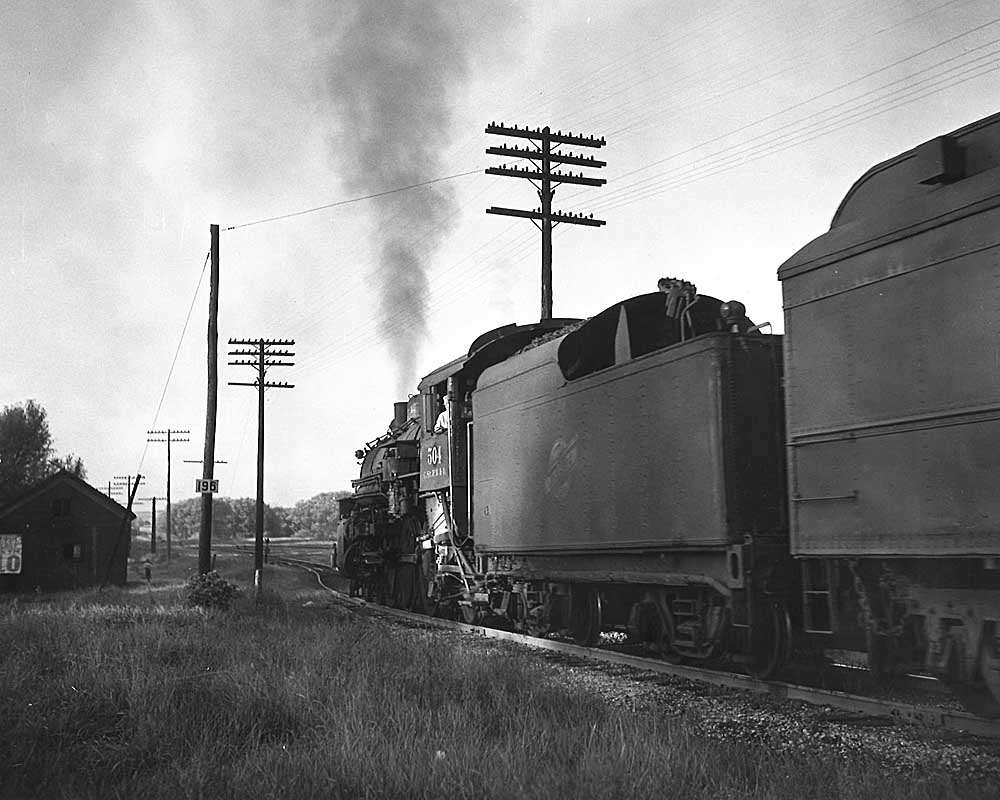The first rail-to-trail conversion in the U.S., the Elroy-Sparta State Trail, gives riders an opportunity to traverse three tunnels.

Wisconsin isn’t usually associated with railroad tunnels, but it once had a number of them. Today only Canadian Pacific’s bore at Tunnel City is active, but next door is the closed tunnel of the Chicago & North Western. The C&NW system once had six tunnels in the state, all closed to rail traffic today. You can still walk or ride a bike through three of them on the North Western’s 32-mile former Elroy-Sparta Cut-Off or “Tunnel District” as it was known it in its later years. From April 1950 until June 1957, the line was used westbound by the Chicago-Huron-Rapid City Dakota 400.
The route was constructed in 1872 when the Chicago & North Western was building north from Madison, Wis. toward a link with the Winona & St. Peter Railroad in Winona. C&NW’s construction company, the Baraboo Air Line Railroad, faced rugged country along the Baraboo River north of Elroy where the river wound through high bluffs. The railroad decided to tunnel through the ridges, but it was a costly proposition: it reported a cost of $476,743.32 for building three tunnels, with the longest stretching 3,833 feet. The railroad opened the route to Winona in September 1873. The Cut-Off had mountainous topography, and some early Elroy railroaders called it going “over the hills.”
Also serving Elroy was the Chicago, St. Paul, Minneapolis & Omaha, or simply the “Omaha Road,” which came under the control of C&NW beginning in 1882 but was operated separately. In 1878 the Omaha acquired the West Wisconsin Railway, which had built their own 900-foot tunnel north of Elroy on a route to Wyeville and Hudson, Wis. Elroy became a rail center, with C&NW trains from Chicago and Madison being handed off to the Omaha Road for forwarding to the Twin Cities or Superior, Wis. C&NW trains headed west for Winona and Mankato, Minn. and South Dakota points used the Cut-Off. Like the Dakota 400, the predecessor Minnesota 400 operated in one direction over the Cut-Off when it was expanded to a Chicago-Mankato service in August 1937. The “one direction” running was utilized to allow connections with other trains at Wyeville. This was short lived, and the Minnesota 400 reverted to its original Wyeville-Mankato route in June 1938 until the birth of the Dakota 400 in April 1950.
The connections at Wyeville were made possible when C&NW opened its 177-mile, $15 million Milwaukee-Sparta Adams Cut-Off in 1911. The well-engineered route bypassed the curves, grades and tunnels of C&NW’s Madison Division, although it did require construction of a tunnel next to the Milwaukee Road’s bore at Tunnel City. Now Chicago-Twin Cities and Chicago-Twin Ports passenger trains could travel to Milwaukee, then west on the Adams Cut-Off, although several continued to travel via Madison and Elroy.
The C&NW leased and began integration of the Omaha Road in 1957. That June the westbound Dakota 400 was rerouted off the Elroy-Sparta line to the route via Wyeville. Another passenger train, the Rochester Special, continued to use the Cut-Off in both directions. Traveling from Chicago to Mankato, the Special once continued west of Mankato into South Dakota as the Minnesota & Black Hill Express, but by the late 1950s it had been cut back to Mankato. When these trains were discontinued in spring 1961, the Elroy-Sparta Cut-Off lost its last passenger trains. All passenger service via Elroy ended in July 1963 with the last run of the former Dakota 400, known as the Rochester 400 after it was cut back from Rapid City to Mankato in 1960. Since freight trains could easily be routed via Wyeville and Tunnel City to Sparta, the Cut-Off and its three tunnels became expendable.
In 1964, C&NW abandoned the Cut-Off, and sold the right-of-way to the Wisconsin Conservation Commission, forerunner of the Wisconsin Department of Natural Resources, for $12,000. A trail was established in 1965 and opened in 1967 that was the forerunner to the Elroy-Sparta State Trail. A new concept in recreational development, it was the first trail of its kind in the U.S. to be designated a National Recreation Trail by the U.S. Department of Interior.
Once a busy division point, Elroy no longer has rail service, but now serves as a junction point for three trails: the original Elroy-Sparta State Trail, the 22-mile “400 State Trail” to Reedsburg, and the Omaha Trail to Camp Douglas which goes through another bore, the old Omaha Road’s tunnel north of town.














An excellent ride both directions. There is at least one campground along the way. Plenty of small towns to stop for refreshment as well. We biked as a family with small children from Elroy to Sparta, stayed overnight in a motel, and biked back the next day. So much fun!
There are three tunnels along the route. All are very wet and the longest demands flashlights and/or bike lights and walking one’s bicycle.
The Badger State Trail is a great ride as well. It is 34 miles from Monticello to the brewery at New Glarus. However, a much-shorter ride is from Belleville to New Glarus. Maybe 12 miles R/T. Lots of shopping, drinking, and food in New Glarus. Very fun and recommended highly.